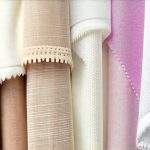Many people experience discomfort due to heat retention in the pelvic area during sleep, often exacerbated by clothing choices. This can be caused by a variety of factors including individual physiology, hormonal fluctuations, ambient temperature, and even simply the type of fabric worn to bed. Finding nightwear that promotes airflow and minimizes friction against sensitive areas is crucial for achieving restful, comfortable sleep. The goal isn’t necessarily about eliminating warmth entirely – healthy circulation relies on some level of thermal regulation – but rather preventing excessive heat buildup that can lead to restlessness, sweating, and general discomfort. This article will explore the best nightwear options designed to help reduce heat near the pelvis, focusing on materials, styles, and features that contribute to a cooler, more comfortable sleep experience.
The challenge lies in balancing comfort with practicality; we want garments that are soft and pleasant against the skin but also allow for adequate ventilation. Traditional synthetic fabrics often trap heat, while some natural fibers, though breathable, can still cling or cause friction. Understanding these nuances is key to making informed choices. Beyond fabric selection, fit plays a significant role. Tight-fitting nightwear restricts airflow and increases pressure, whereas overly loose garments might not offer the support some individuals prefer. We’ll delve into specific recommendations that address these concerns, aiming for options suitable for diverse preferences and body types, always prioritizing comfort and personal needs above fleeting trends.
Fabric Fundamentals: Breathability & Moisture-Wicking
The foundation of cool sleep lies in choosing the right fabrics. Synthetic materials like polyester and nylon are notorious heat traps, clinging to the skin and hindering airflow. While sometimes affordable, they often contribute to the problem we’re trying to solve. Natural fibers generally offer superior breathability, but even within this category, significant differences exist. Cotton, for example, is a popular choice due to its softness and affordability, however it holds onto moisture, which can lead to discomfort when sweating. This means while initially breathable, damp cotton loses much of its cooling effect. Linen, on the other hand, is highly breathable and excels at wicking away moisture, making it an excellent option for warmer climates or those prone to overheating. It does wrinkle easily, though, which some may find undesirable.
Silk is another luxurious but effective choice. It’s naturally temperature-regulating – keeping you cool in summer and warm in winter – and feels incredibly smooth against the skin, minimizing friction. However, silk can be expensive and requires delicate care. Increasingly popular are fabrics like Tencel (Lyocell) and Modal, both derived from wood pulp. These materials offer excellent moisture-wicking properties, are soft and breathable, and are generally more sustainable than some synthetic alternatives. They also tend to resist wrinkles better than linen. Ultimately, the best fabric will depend on individual preferences and budget, but prioritizing breathability and moisture management is paramount.
Consider layering fabrics too. Even a lightweight cotton or silk layer over a Tencel base can provide both comfort and effective temperature regulation. – Avoid anything labeled “microfiber” unless it’s specifically designed for athletic wear with proven wicking properties. – Look for fabrics marketed as “cooling” or “moisture-wicking”, but always check the composition to ensure they aren’t primarily synthetic. – Remember that even natural fibers can be treated with chemicals; organic certifications can help minimize exposure to these substances.
Style & Fit: Prioritizing Airflow and Freedom
The style of nightwear significantly impacts airflow and potential heat retention. Tight-fitting pajamas or lingerie restrict circulation and trap heat, exacerbating discomfort in the pelvic region. Conversely, overly baggy garments don’t necessarily improve things; they can bunch up and create friction. Loose-fitting styles that allow air to circulate are ideal. Nightgowns, especially those made from breathable fabrics like linen or Tencel, offer excellent airflow. If pajamas are preferred, opt for loose-fitting sets with wide legs and a relaxed top.
Shorts paired with a loose tank top or t-shirt can also be a comfortable option, particularly during warmer months. Avoid styles with elastic waistbands that dig in or create pressure. Drawstring closures allow for adjustable comfort, while wider leg openings promote better ventilation. Consider the length of shorts; longer shorts might provide more coverage but could also restrict airflow if they’re too snug. Similarly, avoid tight-fitting underwear underneath nightwear, opting instead for breathable cotton or silk options with minimal seams. Proper fit is crucial; don’t be afraid to size up if it means a looser, more comfortable experience.
The construction of the garment matters too. Seams can cause friction and irritation, so look for flatlock seams or seamless designs whenever possible. Avoid garments with excessive embellishments or restrictive closures that could contribute to discomfort. Ultimately, the goal is to find nightwear that feels like a gentle embrace rather than a constricting barrier.
Undergarment Considerations: Minimizing Friction & Maximizing Breathability
The underwear you choose to wear beneath your nightwear plays a vital role in overall comfort and heat regulation. Synthetic underwear traps moisture and can cause chafing, particularly in sensitive areas. Cotton is a common choice but, as mentioned earlier, it holds onto moisture. Silk or bamboo underwear offers superior breathability and softness, minimizing friction and allowing for better airflow. Look for seamless designs to further reduce irritation.
- Thongs should generally be avoided as they can increase friction and potentially contribute to discomfort. – Briefs or boxer briefs made from breathable materials are often the most comfortable options. – Consider period underwear if you’re concerned about leaks during your menstrual cycle; many brands now offer options made from moisture-wicking fabrics.
If you experience significant sweating, consider using a light dusting of talc-free powder to help absorb moisture and prevent chafing. Remember that individual sensitivities vary, so experimenting with different materials and styles is key to finding what works best for you. Don’t hesitate to prioritize comfort over aesthetics when choosing undergarments for sleep.
Sleep Surface & Room Temperature: Complementary Factors
Nightwear is only one piece of the puzzle; your sleep surface and room temperature also significantly impact thermal regulation. A mattress that retains heat can contribute to overall discomfort, especially in the pelvic region. Consider a mattress with breathable materials like latex or open-cell foam, which promote airflow. Mattress toppers made from wool or cotton can also help regulate temperature.
- Avoid memory foam mattresses if you tend to overheat, as they are known for trapping heat. – Use breathable bedding materials like linen, Tencel, or cotton sheets. – Ensure your bedroom is well-ventilated and maintain a comfortable temperature between 60-67°F (15-19°C).
Using a fan can also help circulate air and prevent overheating. Additionally, consider the humidity level in your room; high humidity exacerbates discomfort by hindering sweat evaporation. A dehumidifier can help reduce humidity levels, creating a cooler, more comfortable sleep environment. Don’t underestimate the power of these environmental factors in achieving restful, comfortable sleep.
Addressing Specific Concerns: Pelvic Pain & Hormonal Changes
For individuals experiencing pelvic pain or hormonal fluctuations (such as those during menstruation or menopause), nightwear choices become even more critical. During periods, loose-fitting pajamas made from breathable fabrics can help minimize irritation and allow for better airflow, reducing the risk of chafing. For menopausal women experiencing hot flashes, silk or Tencel nightgowns offer excellent temperature regulation and can help absorb sweat.
- Consider layering nightwear to accommodate fluctuating temperatures. – Avoid tight-fitting garments that could exacerbate pelvic pain. – If you experience vulvar vestibulodynia or other forms of chronic pelvic pain, prioritize soft, seamless fabrics and avoid any potential irritants.
If you’re experiencing persistent discomfort, it’s important to consult with a healthcare professional to rule out underlying medical conditions. While nightwear can help alleviate symptoms, it’s not a substitute for proper medical care. Remember that finding the right nightwear is a personal journey; experiment with different materials and styles until you find what works best for your individual needs and body.





















